Rouen is one of France’s most delightful cities, with its half-timbered houses, cobbled streets and Gothic spires, and history around every corner.
Rouen, the historic capital of Normandy
Rouen is the capital of the Normandy region. It has been devastated by fires, ravaged by plagues and torn apart by wars, yet always to be rebuilt. Rouen remains the jewel in Normandy’s crown.
Step back in time as you wander the medieval streets, visit the site where Joan of Arc was burnt at the stake and marvel at its magnificent Gothic cathedral, made iconic by Claude Monet. Set amidst the many spires piercing the skyline, it’s not hard to see why Rouen is known as the ‘town of 100 church towers’.
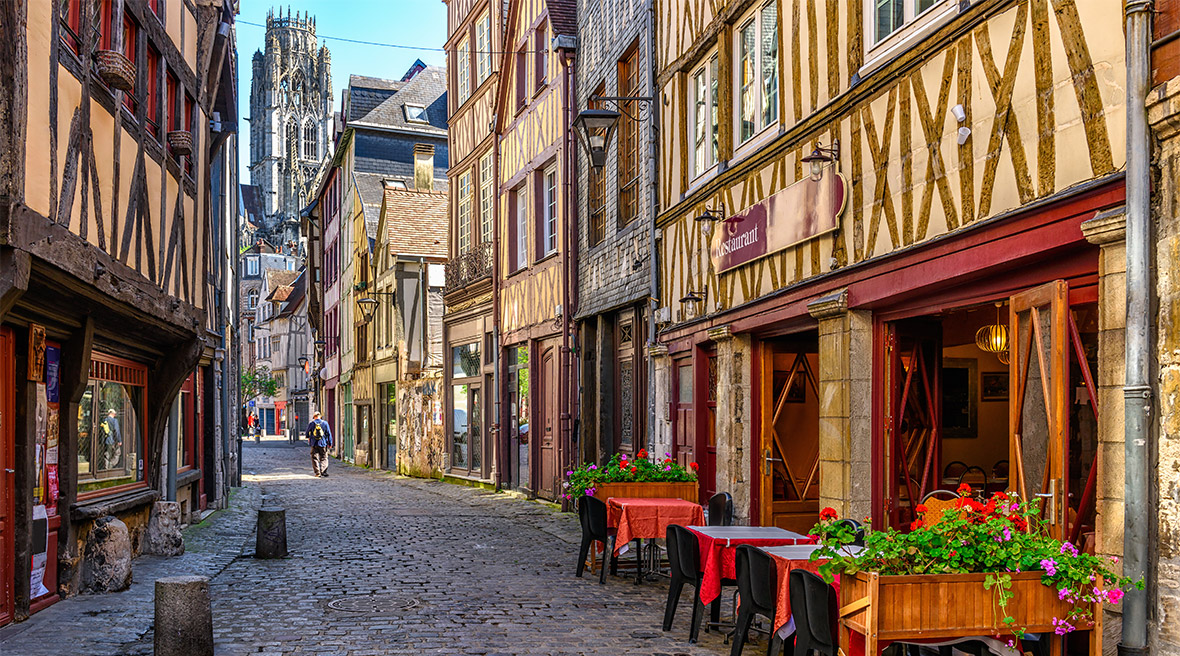
The cobbled streets of the old town of Rouen
Where is Rouen?
Rouen is situated around 80 miles north west of Paris, in a prime spot in the lower Seine valley. A port city on the river, Rouen’s strategic importance has been both its making and its downfall. It grew rich on the textile and wool trade but has been the scene of battles, sieges and bombings throughout its history.
Driving to Rouen from Calais
Rouen is a drive of around two and a quarter hours from our terminal in Calais on the A16 and A28 roads (with tolls).
Things to see and do in Rouen
There is something for everyone in Rouen. Galleries and museums abound for the culture buffs, and stunning countryside with cycle paths and hiking trails to appeal to those who prefer the outdoors. Visit the shops and specialist boutiques for exquisite examples of local craftsmanship, before sampling the delicious regional fare in one of the local restaurants.
Musée des Beaux-Arts
Rouen wouldn’t be the ‘Home of Impressionism’ without its fair share of art galleries. Built in 1870, the grand Musée des Beaux-Arts houses what is considered to be one of the greatest public art collections of France outside Paris. It features masterpieces by some of the world’s most famous painters; the likes of Renoir, Caravaggio, Modigliani, Rubens, Velázquez and, of course, Monet adorn its walls.
The gallery is open from 10am-6pm every day, except Tuesday, and entry to the permanent collections is free.
Place du Vieux Marché
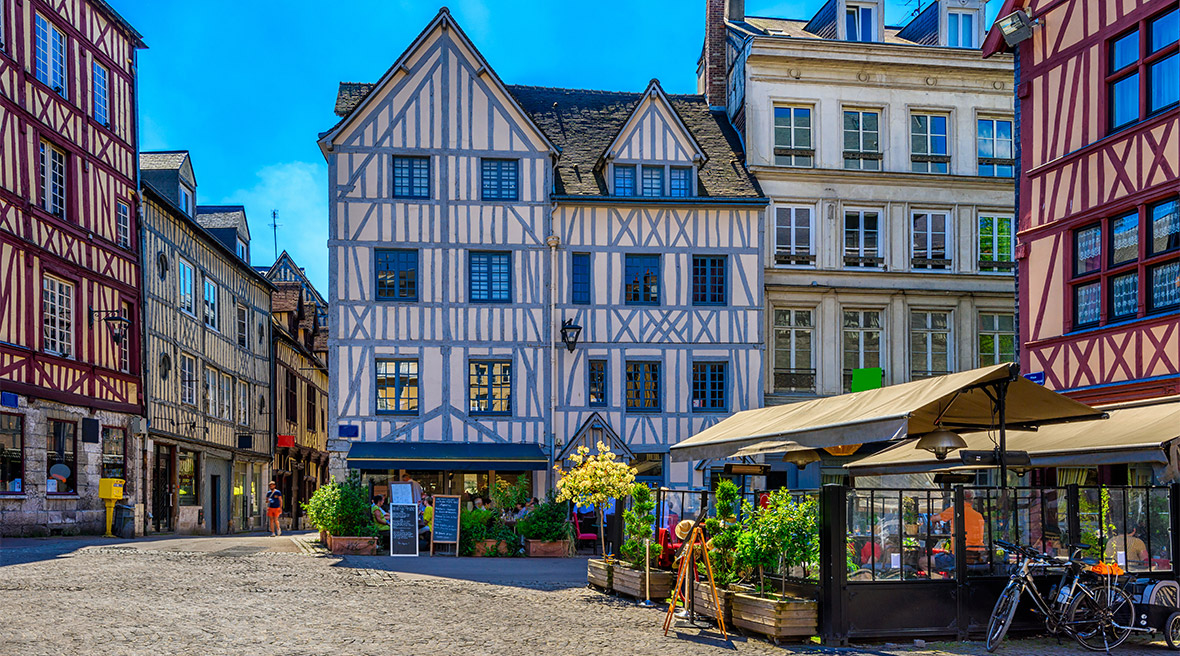
Place du Vieux Marché, Rouen
Joan of Arc was just 19 years old when she was burned alive on a site in the Place du Vieux Marché in 1431. There is a cross marking the exact spot where it happened, which can be found outside the church dedicated to her, the Église Jeanne d’Arc. The remains of the Saint-Sauveur church can also be seen in this, the old market square in the city.
Today Place du Vieux Marché is the square to grab a coffee, some lunch or a refreshing beer at any one of its numerous bars, restaurants and cafés.
Palais de Justice
Whilst in Rouen, be sure to pay a visit to the Palais de Justice, a fine example of early 16th-century gothic architecture. The law courts were reduced to little more than a shell by bombs during the Second World War, and you can still see the pock-marked façade of the building.
It has since been restored to its former glory, with ornate spires, gargoyles and decorative statues. There are tours of the building several times a month and court sessions are usually open to the public for those with an interest in French law.
Gros Horloge
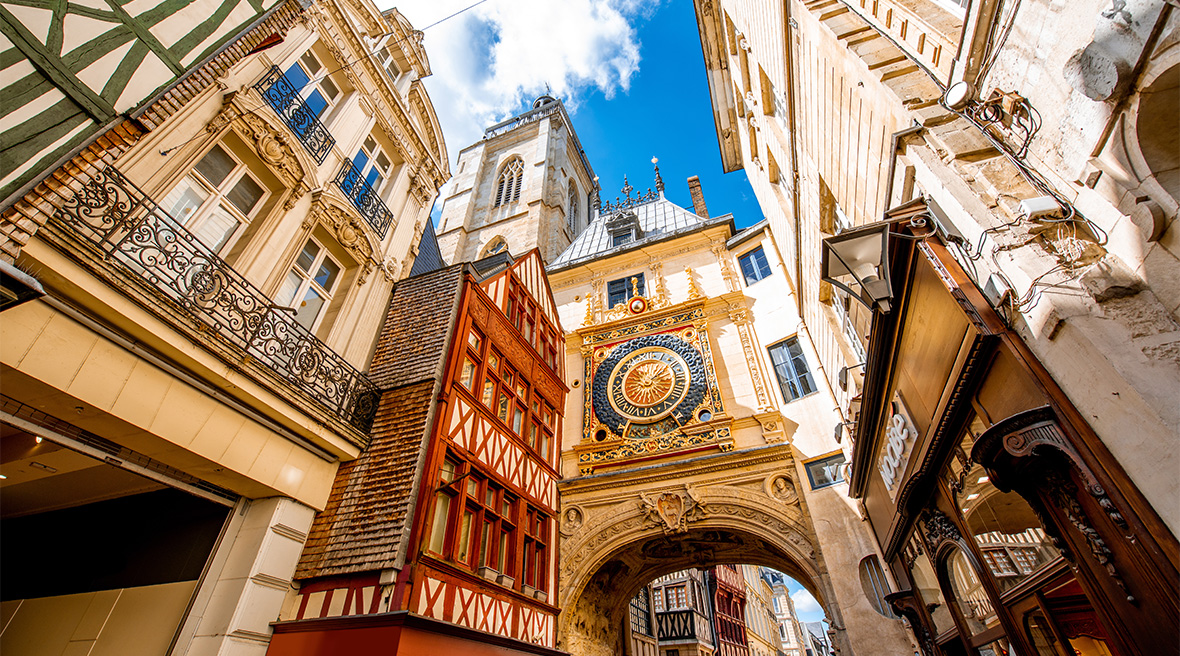
The Gros Horloge, the great astronomical clock
As you stroll down the Rue du Gros Horloge, you can’t miss the ornate astronomical one-handed clock that gives this street its name. There are actually two clock faces, one on each side of the 16th-century arch, which have been keeping time for centuries.
The clock was made in 1389, and originally housed in the adjoining belfry. There is incredible detail and decoration on each of the clock faces, including the phases of the moon, a golden sheep at the end of the clock hand (a nod to the city’s wool trade) and an opening at the base where the days of the week are represented by allegoric characters.
The Gros Horloge is open to the public. Visitors can see the clock mechanism and climb to the top of the belfry, with its panoramic views of the city.
Cathédrale Notre-Dame de Rouen
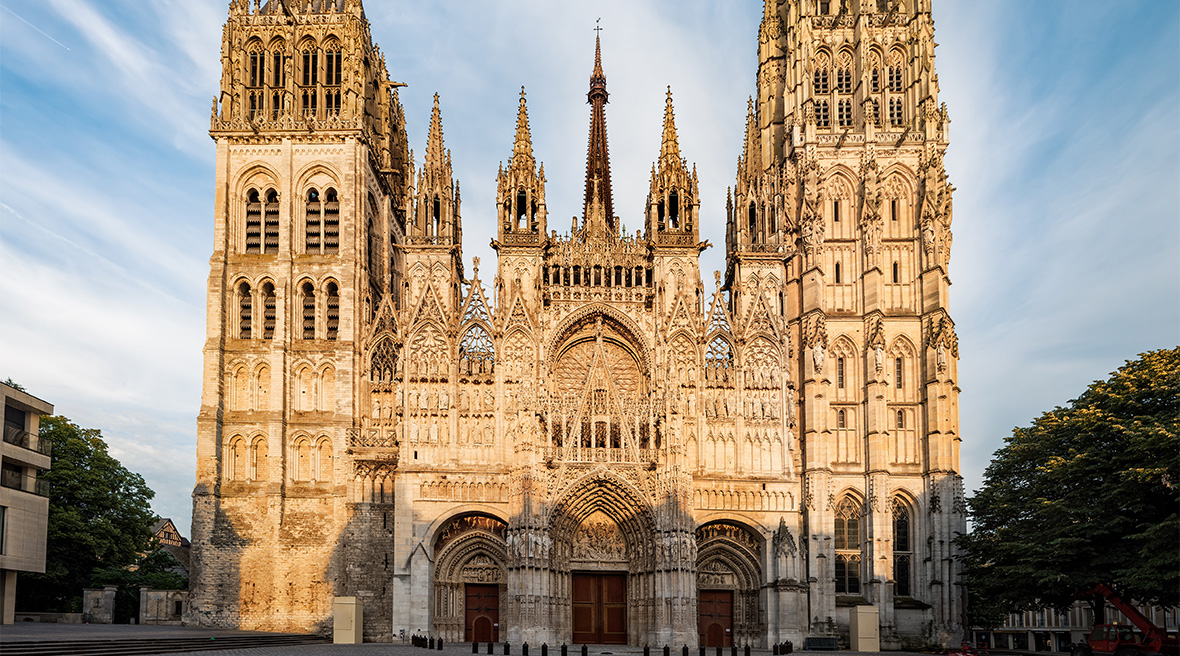
Rouen cathedral
Rouen’s soaring Gothic cathedral inspired Monet to paint a series of 30 canvases of the building experimenting with different lights, and it isn’t hard to see why. Construction of the current building began in the 12th century and was fraught with trials and setbacks, including fires and lightning strikes. It now stands proudly in the heart of the city with its shining white façade and famous Tour de Beurre, which translates as ‘Butter Tower’ – so named because locals funded it in thanks for being allowed to eat butter during Lent.
The cathedral is open every day, and is free of charge.
St Joan of Arc's Church
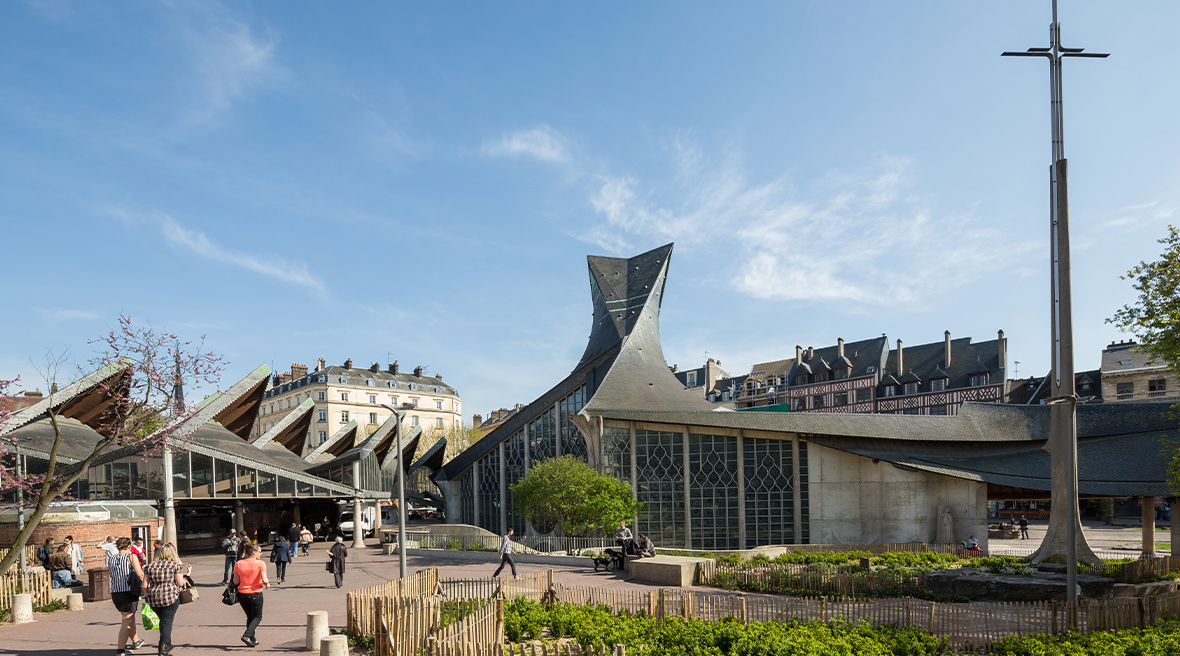
The striking modern church and national memorial to Joan of Arc in Rouen
Rising over the Place du Vieux Marché is Église Sainte-Jeanne d’Arc, the unmistakeable modern church that was built in 1979 to mark the site where Joan was martyred. It is shaped like a longboat and its curves are intended to evoke the flames that consumed her. Inside it houses the Renaissance stained glass windows of a church that had been bombed during World War II. Next to the church is the Joan of Arc national memorial.
Rouen Botanical Garden
To the south of the city you will find Jardin des Plantes de Rouen, a botanical garden that dates back to the 18th century. It features an orangery, greenhouse, tropical greenhouses and a boating lake, and is the perfect place for a relaxing stroll. Home to a stunning diversity of plants and birds (991 different types of fuchsia, it is said), the gardens also contain numerous statues, rock gardens, a rose garden and a runic stone.
Pavillon Flaubert
The novelist Gustave Flaubert was born in Rouen and returned to live close to the city in the village of Croisset in the 1850s. All that remains of that house is the garden pavilion overlooking the Seine, now looking rather out of place beside the busy road and railway line. The pavilion is a museum displaying personal items, writing equipment, portraits and contemporary pictures of Croisset. It is free to visit and about 15 minutes drive from the centre of Rouen.
Visit Rouen with Eurotunnel Le Shuttle
Rouen is so close to our Calais terminal that it should be on the top of your list for things to do in Normandy. Eurotunnel Le Shuttle will take you across the Channel in only 35 minutes, and Rouen is just over two hours away by road.